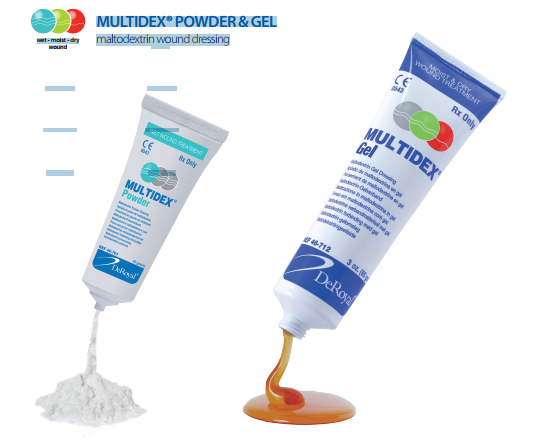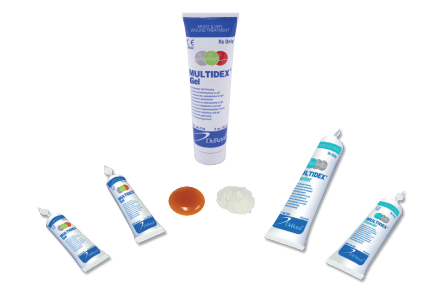Care instructions for open wounds caused by accidents
There are many causes of open wounds, the most common of which are accidents, falls, hitting sharp objects, etc. Whether you have a minor or serious open wound, taking care of it is very important. Some minor open wounds can be treated at home, but if the cut is deep or bleeding heavily, you need appropriate treatment to reduce the risk of complications and infection.

Accidental open wounds can cause infectious complications if not taken care of properly
1. What is an open wound?
An open wound is an injury involving an external or internal break in body tissue, usually involving the skin. Nearly everyone will experience an open wound at some point in their life. Most open wounds are minor and can be treated at home.
Falls, accidents with sharp objects, and car accidents are the most common causes of open wounds. In the case of a serious accident, you should seek immediate medical care. This is especially true if there’s a lot of bleeding or if bleeding lasts for more than 20 minutes.
2. Types of open wounds
There are four types of open wounds, which are classified depending on their cause.
- Abrasion: An abrasion occurs when your skin rubs or scrapes against a rough or hard surface. Road rash is an example of an abrasion. There’s usually not a lot of bleeding, but the wound needs to be scrubbed and cleaned to avoid infection.
- Laceration: A laceration is a deep cut or tearing of your skin. Accidents with knives, tools, and machinery are frequent causes of lacerations. In the case of deep lacerations, bleeding can be rapid and extensive.
- Puncture: A puncture is a small hole caused by a long, pointy object, such as a nail or needle. Sometimes, a bullet can cause a puncture wound.
- Avulsion: An avulsion is a partial or complete tearing away of skin and the tissue beneath. Avulsions usually occur during violent accidents, such as body-crushing accidents, explosions, and gunshots. They bleed heavily and rapidly.

Multidex helps to create and maintain a moist environment conducive to wound healing
3. How are open wounds treated?
Minor wounds can be treated at home. First, wash and disinfect the wound to remove all dirt and debris. Use direct pressure and elevation to control bleeding and swelling.
When wrapping the wound, always use a sterile dressing or bandage. Very minor wounds may heal without a bandage. You’ll need to keep the wound clean and dry for five days. You should also make sure you get plenty of rest.
Pain typically accompanies a wound. You can take paracetamol as directed on the package. Avoid products with aspirin since they can cause or prolong bleeding.
Currently, there are many methods of treating severe and deep wounds that are chosen by many people such as using Multidex ulcer treatment gel containing the main ingredients Maltodextrin and Ascorbic Acid 1%. These substances have a natural wound-healing effect, provide local nutrients, create a natural environment for the body's wound healing process, and help cover the ulcer and prevent infection.
4. Using Multidex in the treatment of accidental open wounds
Multidex® creates an optimal moist environment which prevents the wound from drying out and is beneficial for granulation tissue growth and epithelial proliferation.
- Maltodextrin stimulates autolytic debridement by attracting white blood cells which digest debris and bacteria through phagocytosis. Maltodextrin also attracts fibroblasts that form collagen and promote the growth of granulation tissue.
- Vitamin C creates an acidic environment in the wound by lowering the pH to 4,2. This supports the bactericidal and bacteriostatic mechanism for some aerobic/anaerobic, gram negative/gram positive bacteria. Vitamin C is also necessary for collagen synthesis.

Maltodextrin has the effect of forming a protective film on the ulcer, controlling odor and draining pus
Using Multidex is quite simple, the medication has 2 forms, gel, and powder, suitable for different types of ulcers: For dry wounds, use MULTIDEX® Gel, for wet wounds, use Gel or Powder, for wet wounds, a lot of discharge, should use powder form.
The wound should be irrigated liberally with a sterile physiological 0.9% normal saline or a balanced salts solution. After irrigation, apply Multidex®.
- For shallow wound – 1/4” thick over entire wound site
- For deep wound – fill wound site to surface taking care to fill all undermined areas
Cover with a non-adherent, non-occlusive dressing such as Covaderm Plus®, MultiPad™, Sofsorb®, or Polyderm™ Plus. If necessary, tape in place or use roll gauze or Stretch Net™ to secure dressing. Dressing change should be once a day on minimally to moderately draining wounds and twice a day on heavily exudating wounds.